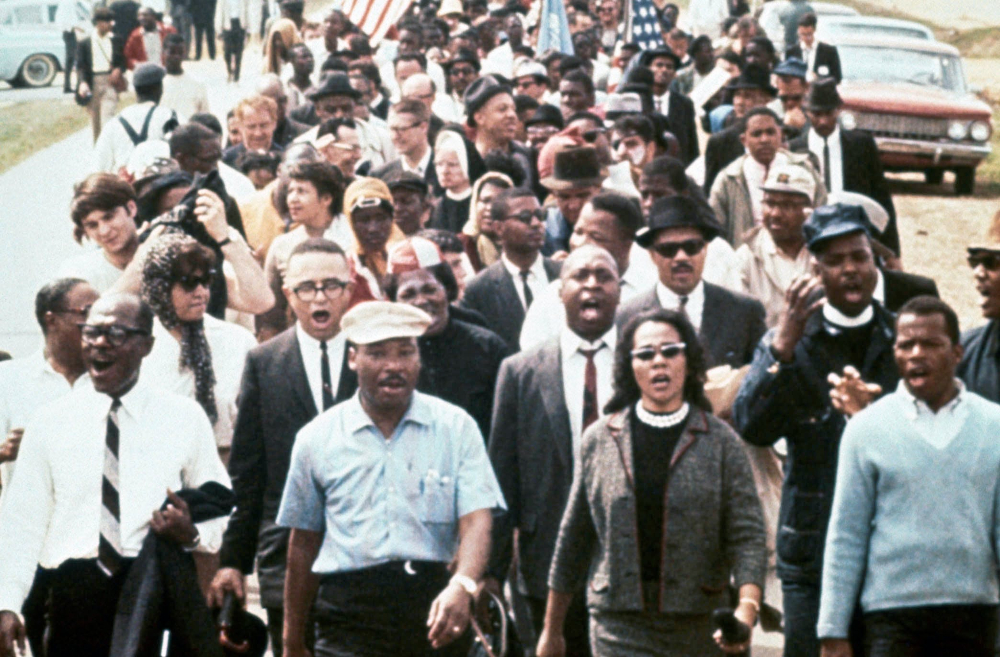Earlier this month, I wrote about six ways that leaders can take action to support black empowerment during Black History Month and beyond.
The actions I listed were designed to be substantive, sacrificial, and consequential for addressing racial inequities.
Black folks want to see big and bold actions.
But this doesn’t mean there aren’t small (low-lift) but meaningful actions that leaders can take to honor black history and amplify black voices right now.
I’ve seen so many leaders who say they want to make progress on the racial justice front who have gotten so caught up thinking, proposing, and studying that they are missing some of the relatively simple steps they can take right now.
Here are a few:

- Infuse black history into your Zooms: I’ve been using black history themed Zoom backgrounds all month that have prompted several important history lessons. Many of the people I have been meeting with do not know the leaders I’ve spotlighted in my backgrounds. It created an opportunity for a quick conversation before or after the regular agenda of our meeting. Someone even shared that her son saw my background during the meeting and she had the opportunity to educate him as well! If you want to get even more sophisticated, I often think about the theme of the meeting and find a background that speaks to that theme. For example, I used a picture of Frantz Fanon for a meeting with folks from the healthcare sector. It takes 2-5 minutes to find a picture and upload it as your background. You could even encourage members of your team to show up to a meeting with a black history background of their choosing!
- Create space on your agenda: Carve out some time on your agenda to acknowledge black history and educate your team. During one staff meeting at TeenSHARP we started the meeting with the prompt: if there was one person in black history that you could have dinner with, who would it be and why would you pick them? Another meeting started by asking staff to contribute songs, movies, documentaries, podcasts, etc. to a Black History Month playlist. We started another meeting with a short Black History Month quiz. Several staff members acknowledged that the quiz results revealed how much more time they need to spend learning.
- Assign some pre-readings: The good thing about black history is that it’s expansive. There’s no topic you’re discussing or area of work you’re engaging in that hasn’t been impacted by the black community. Find some relevant content developed by a black creator, assign it as prep work ahead of a meeting, and make time to discuss. For example, if you work in philanthropy you could read “Telling My Truth as a Black Woman Made Me a Better Grant Maker” Jasmine Sudarkasa. If you work in education, have everyone read “How to Make Anti-Racism More Than a Performance.” If you work in talent, marketing, or advertising have your team read Brittney Oliver’s “Tweeting Inclusion” on God-is Rivera, Twitter’s Global Director, Culture & Community. Whatever you do, read anything from Tre Johnson.
- Amplify black voices: It is common to bring in a black leader or two to deliver a talk during Black History Month. But that’s the bare minimum you can do to amplify black voices. Push yourself to give a platform to a black changemaker who is not at the top of everyone’s invitation list. I promise you black brilliance is not in short supply. Push yourself to amplify a variety of black perspectives, not just the ones that feel easy on the ears. And don’t overlook young black voices. Fred Hampton, John Lewis, Claudette Colvin, Diane Nash, and so many others were leading the fight for racial justice and civil rights in their teens and twenties. Our TeenSHARP students have created organizations like the Delaware Black Student Coalition and TeensDriveChange and are an example of the types of voices that need to be centered. And don’t forget about the black leaders in your organizations whose profound insights might be getting overlooked while the organization searches for whichever black thinker is hot right now. Many of us have been leading grassroots work pro bono in communities of color after hours for years and our employers never took an interest.

5. Open up: Don’t love black history and culture from a distance. Don’t say you care about the black community while you remain guarded and exclusionary. A few years ago, a black executive invited my wife and I to her company’s annual Black History Month event where they paid to bring in a high-profile speaker. That year their speaker was MacArthur Fellowship and Pulitzer Prize winner Nikole Hannah-Jones. As is custom, we asked how many people we could bring along so we could bring a few TeenSHARP students and parents. As expected the Nikole Hannah-Jones’ speech was moving and we were grateful that we were able to get a few of our students on the invite list. But there was capacity in that room to bring many more from the community to learn alongside that company’s predominantly white staff. Now, in this virtual world, there’s even less of an excuse to not find ways to open yourself up to the community. There’s power in proximity!



